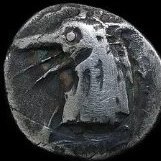Cerca nel Forum
Risultati per Tag 'ottocento; ungheria;'.
Trovato 1 risultato
-
Ungheria: scienziati trovano in un antico barattolo qualcosa di incredibile Una scoperta davvero bizzarra! Nel 2005, una squadra di esperti ha aperto un vaso in un cimitero abbandonato a Nyarlorinc, in Ungheria, e ha trovato una mano di uno strano colore verde stringere una moneta. “Durante la raccolta di dati in una serie osteologica del tardo medioevo di Nyárlőrinc-Hangár út, ci siamo imbattuti in resti molto piccoli di colore verde di un individuo che sembrava essere parzialmente mummificato”, ha scritto il team del ritrovamento anni dopo . “La conservazione di questi minuscoli resti è stata così buona che abbiamo deciso di invitare uno specialista per condurre una serie di indagini multidisciplinari sulle ossa al fine di giungere a una conclusione comune riguardo a questi rari reperti senza eguali nella documentazione bioarcheologica. ” In altri dettagli strani e inspiegabili del caso, una moneta trovata accanto ai resti era in circolazione tra il 1858 e il 1862. O in altre parole : “La sepoltura del vaso è avvenuta almeno 150 anni dopo l’abbandono del cimitero”. Il mistero principale da esplorare, tuttavia, era ciò che aveva causato la conservazione osservata nel corpo, in particolare del tessuto molle della mano. La mummificazione naturale è rara. Sebbene avvenga attraverso una serie di metodi, di solito avviene in condizioni più asciutte e/o più fredde rispetto a quelle che si trovano al cimitero. Inoltre, altri corpi deposti nelle vicinanze del cimitero sono decaduti normalmente, pur essendo nelle stesse condizioni di base. Utilizzando l’analisi chimica sui corpi, il team ha trovato la risposta: il corpo del bambino era pieno zeppo di rame, soprattutto, come ci si aspetterebbe, nella mano che stringeva la moneta di rame. Infatti, il rame trovato nel corpo era 497 volte superiore ai livelli trovati in altre mummie. Le proprietà antimicrobiche della moneta di rame hanno impedito che la mano e altre parti del corpo contaminate dal rame venissero distrutte dai microbi. Il team ritiene che sia il primo caso di mummificazione esclusivamente basato sul rame mai segnalato. Aggiungono che con altre sepolture che avvengono con rame posto vicino ai corpi, “si spera che in futuro compaiano altri casi”. https://www.scienzenotizie.it/2023/06/08/ungheria-scienziati-trovano-in-un-antico-barattolo-qualcosa-di-incredibile-4670090 https://www.scienzenotizie.it/2023/06/08/ungheria-scienziati-trovano-in-un-antico-barattolo-qualcosa-di-incredibile-4670090 How a Copper Coin Mummified a Baby’s Hand The preemie was buried in a jar in an medieval cemetery with a coin to “pay” for passage into heaven János Balázs/Archaeological and Anthropological Sciences Over a decade ago, scientist János Balázs and a colleague were looking through old photos of a cemetery excavation when they found something unexpected: a tiny green mummified hand of a baby. As Nicholas St. Fleur at The New York Times reports, the cemetery in question was located in Nyárlőrinc, a village in the south of Hungary and contained 540 graves that dated back to the 12th and 16th centuries. Most of the remains were what the expected, but the green hand, along with several other green-colored bones, caught their attention. Why was the hand mummified, but not the rest of the body? Balázs, a biological anthropologist at the University of Szeged in Hungary, and his colleague examined the remains in search of answers. Their analysis, published in a study in the journal Archaeological and Anthropological Sciences, led them to an previously unknown form of mummification that was all thanks to a small copper coin. The researchers initial examination of the tiny remains led them to the conclusion the baby had been a premature, miscarried or stillborn child. But to figure out the mummification riddle, they needed to look closer. The researchers analyzed the chemistry of the remains, which revealed surprisingly high copper levels—hundreds of times more concentrated than expected, St. Fleur reports. But where did the copper come from? Teasing through the objects uncovered at the dig, which were housed at a nearby museum, he found his answer: A small broken jar and corroded copper coin that fit perfectly in the tiny mummified hand. As the researchers write in the study, in some cultures a child that died before it was baptized was sometimes wrapped up in a textile or buried in a pot with a coin to pay St. John the Baptist for a christening. But the tradition had never been seen before in Hungary. What’s more, the type of coin was circulated between 1858 and 1862, which means the burial wasn’t part of the medieval cemetery. Instead, the child was buried 150 years after the graveyard had been abandoned. Overall, the evidence paints a sad picture of the events that lead to the mummification of the hand. Sometime in the mid to late eighteenth century, a woman who likely lived nearby had a stillbirth. Following an ancient, unrecorded tradition, she squeezed a small copper coin into her child’s hand, placed its curled-up remains in a pot and buried it in the ancient cemetery at the edge of town. While most of the baby decomposed naturally, the anti-microbial properties of the copper coin kept the child's hand and part of its upper back intact, mummifying overtime. The team compared the copper concentrations in the green baby with two other pre-term infants found in jars of unknown age at the site. One had been buried with a copper coin but did not mummify. The other was not buried with copper. The children buried with the coins has copper levels 497 and 495 times normal concentrations in their bodies. Though the anti-microbial properties of copper are well known, this is the first known time it's caused mummification. While this may be the first officially documented case of copper mummification, there are other mummies that may have been preserved or partially preserved by copper. In 2002, archaeologists in Siberia discovered 34 burials that included several mummies sheathed in copper and five infants buried with copper face masks. Though local protests stalled their study, it may turn out that these mummies were also created by copper. In 1959, archeologists found a mummified lung inside the sarcophagus of Merovingian Queen Arnegunde, who ruled in France in the sixth century. Researchers weren’t sure if the lung had been embalmed somehow or naturally mummified. In 2016, researchers investigated further, finding that it’s likely Arnegunde was embalmed using the technology of the time, but a copper belt over her chest also interacted with embalming agents, preserving one lung while the rest of the corpse skeletonized over time.
Lamoneta.it
La più grande comunità online di numismatica e monete. Studiosi, collezionisti e semplici appassionati si scambiano informazioni e consigli sul fantastico mondo della numismatica.
Il network
Hai bisogno di aiuto?



